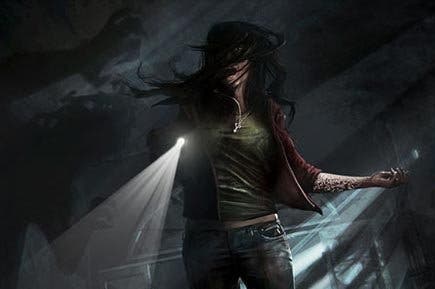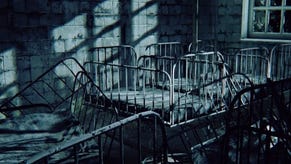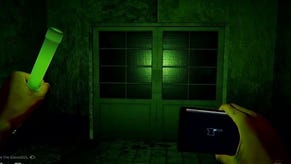Daylight review
Lightmare.
A long-abandoned mental hospital situated in a sleepy fishing village; corridors that itch with maggots; hallways strewn with rotting sofas and lonely hospital trolleys; a breathy, fearful female protagonist who shrieks at every turn ("I know there's someone there!"). Stained walls, glowing pentagrams, squeaking wheelchairs, doors that open with a metallic suck, ghosts that flicker about in Victorian dresses and stare from hollow eye-sockets: Daylight is a misery of horror clichés. Perhaps the only novelty here is the fact that you principally explore the groaning hospital by the light of your smartphone.
And yet, over-familiarity with the props and the setting has done little to rob the game of its horrifying impact. Play Daylight in the dark with the sound turned up and your screams will wake the neighbours.
Sarah, Daylight's quaking yet resourceful protagonist, has few resources with which to hold back the shadows of Mid-Island mental hospital. Her phone acts as a pitiful torch, a spotlight with a short and fuzzy beam. She can also carry up to four glow sticks. (Try to pick up any more than this number and the game warns: "You have too many glow sticks," as if you're an over-encumbered raver.) Later in the game, she gains access to flares.
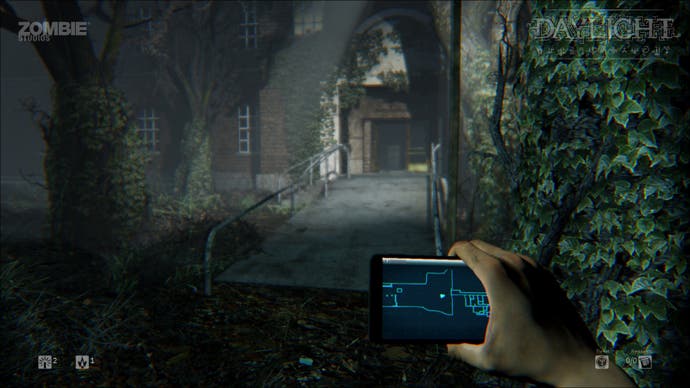
The light from the glow sticks picks out objects of interest in the environment: desks and cabinets that can be explored for clues and valves and switches that must be flicked to open up new pathways. The flares, which are much harder to come by, burn with a red flame, casting everything in a hellish glare. They act as your only and valuable offensive weapon and will scorch up any ghosts that try to chase you down.
In text, swiping at a ghoul with a torch sounds absurd. But when you're alone in the belly of this forgotten hospital, spinning on your heel to work out where that dread sound came from, it's anything but comical. Daylight borrows Slender's elegant trick of escalating peril the closer you draw towards your goal. In each section of the hospital you must collect six remnants - a fancy term for old patient records and staff notes. With each new scrap of evidence you collect, the 'threat' dial ramps up a notch, increasing the chance that you'll run into one of the ghostly inmates who still roam the halls.
Once you've collected six scraps of paper you must take them to a glowing room where they are mystically exchanged for a 'Sigil', an item which you must then carry to the final locked door in that area of the hospital. The Sigil could be a teddy bear, a bible or or a pair of scissors, but what's important is that holding this item prevents you from wielding a torch or a flare. During the final dash to the exit, you have no efficient means to light your way or to protect yourself.
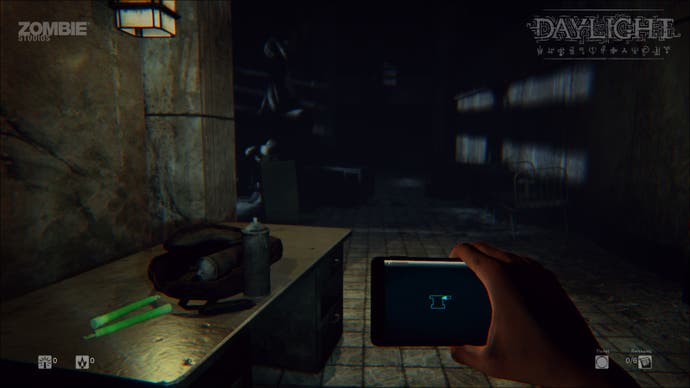
It's devastatingly effective design. This sense of terror is exacerbated by the fact that the hospital's layout is procedurally generated: the location of the remnants as well as the two key rooms shift with each play-through. The game's two-hour running time inspires repeat play but, on your first attempt at least, you have no mental map of Mid-Island Hospital to discard yet, and the gimmick is largely meaningless. That is, until one of the ghosts kills you and you're forced to return to a newly laid-out hospital.
The shifting layout is a design flourish intended to extend the replay value of the game, but it also works in concert with its theme. Each time you retry a section you have a renewed sense of disorientation and dread. When you can't secure a mental grip on a place, you feel lost. We all know how it feels to be lost.
Perhaps the game's greatest strength, however, is its audio design. There are all the usual minor key synths and violins to create a general audio bed of anxiety, but it's the clicks, drips, rasps and screeches that will tip most players from uneasiness into full-bloom terror. The echoing squeak of the soles of your shoes on old concrete reminds you that you're present in this place; the distant howl of some forgotten inmate reminds you that it's somewhere you do not want to be. Indeed, the first moment that you look up from checking the map on your phone's screen to find a ghost woman standing directly in front of you would be memorable even if there were no sound. But when accompanied by a cacophony of miserable sound effects, it comes close to a trauma.
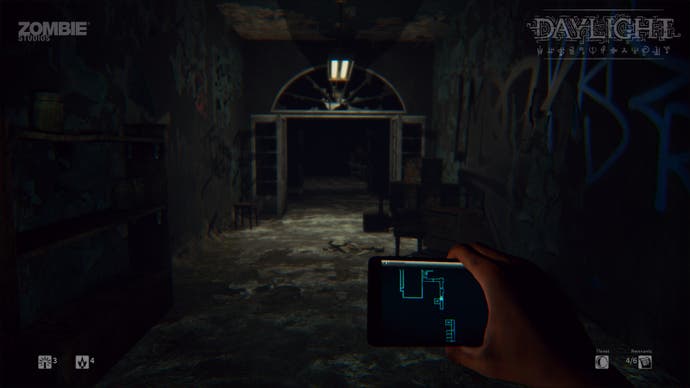
The game succeeds principally thanks to its core spine of play and execution. The other adornments - props such as random historical photographs left laying about the place, designs such as the odd (mercifully infrequent) sliding crate puzzle, and cheap shocks such as doors that slam open when you approach and lockers that rock possessed back-and-forth - are less interesting and less successful.
Daylight has neither the creeping sense of psychological dread of Fatal Frame nor the poster man antagonist of Slender, and its reliance on cliché lacks distinction. But if the game's straightforward purpose was simply to panic and upset its player then it is an indisputable success, no matter how cheap the tricks employed.
